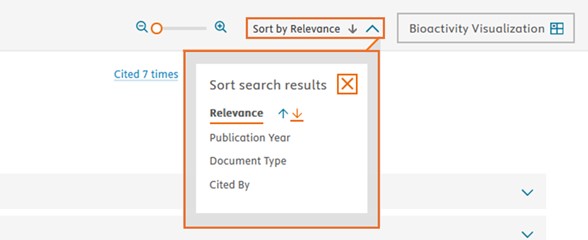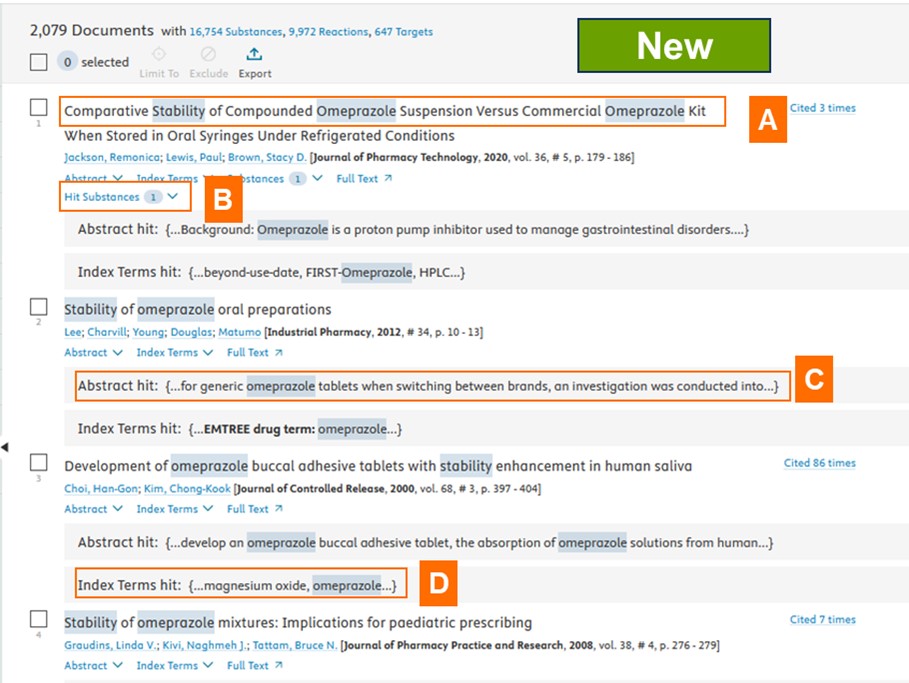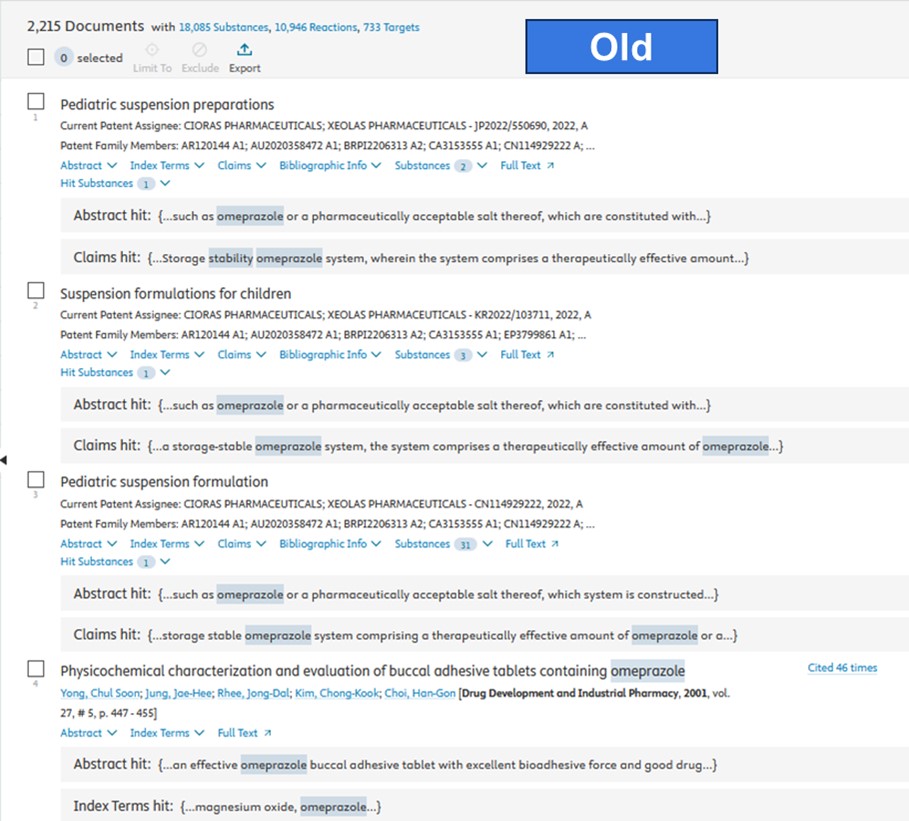Release notes for May 2024
Last updated on October 25, 2024
This release focuses on improving discoverability of relevant documents for any query.
Enhanced relevancy ranking
Bringing forward relevant results for any given search is critical for efficient discovery of answers, especially when using text queries leading to documents appropriate to a question.
To ensure the most relevant results are being brought forward for text searches, an improvement to the relevancy ranking algorithm has been developed.
- Relevancy ranking considers several details extracted from a document (articles and patents):
- Title, Abstract (articles and patents), Keywords (10 different types including author keywords) and presence of a structure (based on query)
- The ranking algorithm works by matching query terms against the extracted details as mentioned above.
- Each of these details has a weighting in terms relevance:
- Title
- Abstract
- Keywords
- Presence of a structure
- Based on where query text appears, a weighting is calculated for all the document results for your search, and this determines the ranking order of your results.
The new ranking better aligns the query to the content of a document result being presented as part of a search.
Here is an example of the results returned for the newly implemented algorithm versus previous ranking system: Example query “Stability of omeprazole”.
On a document result, sorting option can be located via this dropdown menu:

The new relevancy ranking with its greater emphasis on the title (A), new consideration for the presence of a structure (B), and abstract (C) in the document brings forward more interesting results. Note that index terms (D) are also considered but given a lower weighting.

The old ranking returns more results based on query terms appearing in the abstracts and keywords section instead of the title. This can lead to less relevant results being presented.

Better index term recognition from text searches
As part of our extraction process there are many important keywords and concepts, which are extracted from the full text literature. These you normally see in the “Index terms” section (D) of a document. We have made some changes to how our text search functionality works whereby more of these important concepts are better recognised during a search. This coupled with improvements to relevancy ranking ensures enhanced discoverability of the most relevant answers to your research questions.
Did we answer your question?
Related answers
Recently viewed answers
Functionality disabled due to your cookie preferences